
If you want a perfect apple, you gotta go to the source. Soil laced with volcanic ash, cool nights, and sunny days create an ideal microclimate for growing succulent pears and apples in Hood River Valley. As far back as the 1850s farmers started planting orchards here. This afternoon we’re sampling the valley’s rich bounty.
After descending from Timberline Lodge, we take Route 35 a few miles east of Government Camp. Soon we’re driving down the arid East Fork Hood River canyon. Here on the east side of Mt. Hood, sparse pine forest lines the canyon slopes instead of the dense undergrowth typical of the west side.
When we emerge from the canyon, the Hood River Valley spreads out below us in shades of green, gold, and brown. Farms, vineyards, and orchards lie mixed among fir and pine forests and rolling ridges.
“I’m ready for some apples,” declares my niece. Our first stop is Kiyokawa Family Orchards in the upper valley, a couple miles off Route 35. After passing rows and rows of trees heavy with apples, we park in front of the well-marked farm stand.
 Large white plastic bins heaped full of apples and pears are lined up inside. I grab a bag and fill it with my current favorite apple—round and red-streaked Honeycrisp. My niece wants oversized Fujiis. My sister goes for the classic Red Delicious and some Bosc pears. In the car, my niece bites noisily into an apple, and I can smell the sweet pungent ripeness on her satisfied exhale.
Large white plastic bins heaped full of apples and pears are lined up inside. I grab a bag and fill it with my current favorite apple—round and red-streaked Honeycrisp. My niece wants oversized Fujiis. My sister goes for the classic Red Delicious and some Bosc pears. In the car, my niece bites noisily into an apple, and I can smell the sweet pungent ripeness on her satisfied exhale. Several few miles north on Route 35, I see it. “This is the place!” I tell my sister to pull over at Draper Girls Country Farm, where bales of hay piled with pumpkins and bright yellow sunflowers line the parking area next to an orchard. Mt. Hood looms large in the distance, looking elegant and graceful from this angle.

A few years ago I stopped at Draper Girls and want to stock up on their famous cinnamon and sugar-dried apples. Just sniffing these chewy sweet delicacies takes me back to my grandmother’s kitchen. Inside the large open-air farm stand, shelves are packed high with jars of pickles, jams and jellies, spicy chutneys, pear and apple butter, and more. My sister nabs several jars of Northwest huckleberry and blackcap jam to take home to Virginia.
By late afternoon, my niece is ready for a snack. Just above Hood River, the highway curves broadly and we sweep down toward the Columbia River. Wind and kite surfers fleck the river below us like big butterflies fluttering on the surface. Hood River has grown much larger and hipper than the small orchard town I remember as a kid, but the downtown retains its historic charm. We dash into Hood River Bagel Company close to the Route 35 junction so my niece can get a PB&J bagel. (Hood River deserves it own whole post...later.)
We’ve run out of time and need to zip the 65 miles back to Portland through the scenic Columbia River Gorge on I-84. Steep forested slopes and basalt cliffs rise 1,000 feet and more on either side of the Columbia until the river widens just east of Troutdale.
Get Active
Want to burn some calories along the way? Drive 10 miles up a dirt road to 6,000 on the northeast side of Mt. Hood and hike to spectacular views above timberline in the Cloud Cap area. Turn off Route 35 onto the Cooper Spur Road before you reach the valley. After you reach the ski area, take Forest Service Road 3512 to Cloud Cap campground . At this old Civilian Conservation Corps camp (and present-day small campground), walk left as you face the mountain and soon you’ll pass an old wooden amphitheater just beyond the campground. Continue through alpine meadows and upward into the exposed rocky slopes and ridges, where you’ll find an old weathered rock and wood shelter. On a clear day you can see the distant brown stretch of eastern Oregon; glacier-studded Mounts Rainier, St. Helens, and Adams to the north in Washington; and the pastoral Hood River Valley below.
 Another thigh-burner is a dash to the top of Multnomah Falls in the western Columbia Gorge. As you’re driving west on I-84, get off at the clearly marked Multnomah Falls exit. Park and follow the signs behind Multnomah Falls Lodge to the trail. The paved path switchbacks up 600 feet in 1.2 miles and tops out just above the lip of the waterfall. Catch your breath on the circular deck just above where Multnomah creek plunges off the basalt cliff. Wear shoes with good traction; the asphalt can be slick even on dry days from seeps in the hillside.
Another thigh-burner is a dash to the top of Multnomah Falls in the western Columbia Gorge. As you’re driving west on I-84, get off at the clearly marked Multnomah Falls exit. Park and follow the signs behind Multnomah Falls Lodge to the trail. The paved path switchbacks up 600 feet in 1.2 miles and tops out just above the lip of the waterfall. Catch your breath on the circular deck just above where Multnomah creek plunges off the basalt cliff. Wear shoes with good traction; the asphalt can be slick even on dry days from seeps in the hillside.When You Go
For a map of this trip, go to Mt. Hood Scenic Byway. The Hood River County Fruit Loop website shows how to get to the farms and their events. Thanks to www.byways.org for letting me download the photo of Mt. Hood above Hood River Valley by Peter Marbach (Digital Media Library © 2008 Multimedia Data Services Corp.).








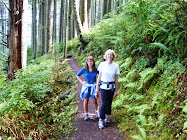

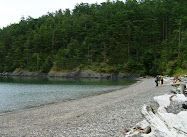
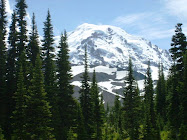



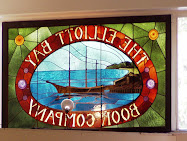
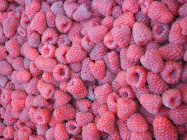
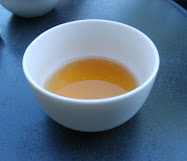
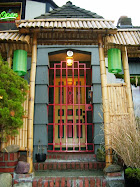


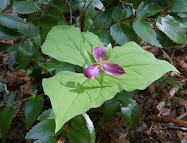

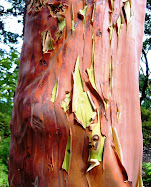

No comments:
Post a Comment